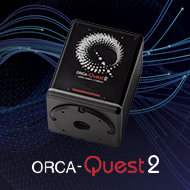Single-photon counting is a technique used to count individual photons using a single photon detector. This emits a pulse of signal for each photon that is detected and the number of pulses is counted, providing an integer number of photons detected per measurement interval. The counting efficiency is determined by the quantum efficiency and the system’s electronic losses.
The advantages of photon counting include the elimination of gain noise. It also helps to achieve greater accuracy and precision, in line with ever-increasing demand from optical measurement methods. It can improve temporal resolution, because, if it is known that a single photon was detected, the centre of the impulse response can be evaluated to precisely determine its arrival time.
Single photon detection is useful in fields such as optical communications, quantum encryption and information science, which need single photon detection, and need it complete with a high quantum efficiency and precise timing for coincidence detection. It is also used in medical imaging, light detection and ranging, DNA sequencing, astrophysics and materials science, to name a few applications. More recent applications such as lidar and optical time-domain reflectometry (OTDR) need very low light levels and photon detecting counters are ideally placed to assist here.
Single photon counting products on the market now
Vendors of single photon counting detectors, modules and other products for single photon counting include Aurea Technology. The company designs and manufactures high-performance and easy-to-use single photon counting modules, designed to enable scientists and engineers to measure very low light levels down to a single photon. Aurea also offers an ‘all-in-one’ time correlated single photon counting (TCSPC) module. The company’s solutions are used in the biotechnology, nanotechnology, life sciences, optical networking, bio-medical, environmental and aeronautics industries.
Becker & Hickl has a proprietary TCSPC principle ro make TCSPC faster than the existing devices. The BH devices are designed to record multi-dimensional photon distributions, time-resolved images, sequences of photon distributions, or multi-dimensional time-tag data. TCSPC products are complemented by the firm’s picosecond diode lasers, detector modules, multi-spectral detector assemblies, and experiment control modules.
Boston Electrics is the North American distributor partner for Becker & Hickl, Scontel, a manufacturer of ultra-low noise superconducting single photon counting systems for the visible and near-IR range, and Licel, producer of linear and TCSPC-based hybrid atmospheric probe lidar receiver electronics.
ET Enterprises has long supplied photomultiplier tubes and associated electronics, and more recently the company’s product portfolio expanded to include high QE and compact photomultiplier tubes, low noise, low power consumption high voltage power bases and photodetector modules. This includes a range of high-gain photomultiplier tubes specifically designed for single photon counting applications.
The Excelitas suite of SPCMs are self-contained modules that meet the low-light-level detection demands of confocal microscopy, fluorescence, luminescence, and TCSPC, particle sizing and quantum communications. The company says that the SPCMs offer market-leading photon detection efficiency, low after-pulsing, highest uniformity over the active area, high linear dynamic range, and low dark counts.
Hamamatsu manufactures and customises multi-pixel photon counter (MPPC) detectors and modules in-house, using its silicon foundry technology. MPPCs, otherwise known as SiPMs, are a semiconductor photon counting device made up of multiple avalanche photodiode (APD) pixels operated in Geiger mode.
ID Quantique offers a range of quantum sensing products and solutions. For single-photon detection, there are single-photon avalanche diodes in the visible wavelengths (Si, 350-900nm) and telecom wavelengths (III-V material, 900-1700nm), as well as the high-efficiency, broadband and picosecond-fast superconducting nanowire devices (780-1625nm).
Laser Components introduced its Count range of complete single photon counting modules in 2010. At the heart of the Count modules is a Geiger-mode silicon avalanche photodiode, which was specifically developed by sister company, Laser Components Detector Group. This is thought to be one of the lowest-noise photodiodes on the market and features an excellent quantum efficiency in the blue and red spectral regions.
Marina Photonics has been supplying high speed photon counters since 1987. Two to four channels of photon counting are available with 1GHz per channel sustained count rates with no dead time or lost counts. There is no start-stop reset time. Once photon counting is triggered, it continues to place photons in one nanosecond bins until the entire process is stopped by a reset. The photon counter board contains up to four 1GHz photon counting channels and one input trigger to start data collection.
Pacer is a distributor of photon counting solutions from Excelitas, including SPCMs with high single-photon detection efficiency, and greater sensitivity than the PMT in the visible range. APDs are also available that are designed to provide higher sensitivity than standard photodiodes. These are generally recommended for high bandwidth applications, or where internal gain is needed to overcome high preamplifier noise.
Photek’s IPD3 is based on a true single photon counting sensor that provides simultaneous position and timing information for each detected photon. The camera outputs a continuous stream of photon detection location and time (x, y, t), with a spatial resolution of 100µm and a timing resolution of 10ns. The IPD3 is ideally suited for continuous imaging of processes with very low light levels over wide fields. The high resolution time tagging enables 100% duty cycle imaging of time resolved events. The IPD3 is customisable, with multiple options of image plane formats, high sensitivity photocathodes and accessories that can be combined into complete turnkey systems.
Photon Force is a manufacturer of high throughput, fast time-resolved single photon counting cameras and sensors. The company’s technologies are used in areas such as photonics, quantum optics and scientific/engineering research, bringing order-of-magnitude acceleration to single-photon imaging and data processing. The PF32 TCSPC SPAD array camera range allows the timestamping of 500,000,000 photons per second, with a 55 picosecond resolution and a 32 x 32 TCSPC pixel array. Updated for 2023, the PF32 camera range now provides enhanced computational capacity and easier connectivity via a USB-C interface and planned firmware module releases. Photon Force also provides custom sensors and camera firmware as needed, where non-standard functionality may be required.
Photon Lines supplies radiation detectors and imagers from Advacam for academic and industrial use. Advacam commercialises Medipix technology, which is under development at CERN, Switzerland. There is a wide range of photon counting detectors, including the AdvaPIX Quad fast large area x-ray camera made up for single time pix devices with frame rate of up to 1300 frames per second and 262k pixels; the Lincam photon detection and counting camera that is perfect for FLIM and light sheet microscopy applications and more.
Photonic Solutions is a partner distributor for Becker & Hickl, offering the full range of time TCSPC cards and multichannel scalers within its photon counting equipment product range.
Pi Imaging Technology was established to change the way light is detected by creating photon-counting arrays with high sensitivity and low noise. Its technology is based on seven years of dedicated work at TU Delft and EPFL and six patent applications. The core of it is a single-photon avalanche diode (SPAD) designed in standard semiconductor technology. This enables the photon-counting arrays to have an unlimited number of pixels and adaptable architectures.
Princeton Instruments’ ProEM-HS:1024BX3 is an advanced EMCCD camera, using low-noise readout electronics and a 1,024 x 1,024 EMCCD. This camera delivers single photon sensitivity and fringe suppression with patented eXelon3 technology. The 2-in-1 camera features 30 MHz readout speed with the EM gain mode to deliver 25fps, a slow scan normal clock-induced charge (CCD) readout mode with very low read noise for precision photometry applications. The ultra-fast custom CCD readout mode is specially designed to deliver greater than 4,400 fps with reduced ROI, whereas the special spectra kinetics mode delivers 300,000 spectra per second.
Solid State Supplies is a partner distributor of the Excelitas suite of SPCMs. Typical applications include lidar, photon-correlation spectroscopy, astronomical observation, optical range finding, adaptive optics, ultra-sensitive fluorescence, particle sizing and quantum communication.
Thorlabs offers single-photon detectors and SPCMs with a range of photon detection efficiencies (PDEs), detector sizes, gain options and wavelength ranges. The SPDMA single photon detection module, designed for use from 350 to 1100nm, features continuously adjustable gain and an SMA electrical connector from which the TTL output can be monitored by an oscilloscope or external counter. Comparatively, the SPDMHx fixed-gain single photon detection modules, for use from 400 to 1000nm, combine a higher PDE in the NIR with low maximum dark count rates; the output TTL pulses are accessible via a LEMO connector.
This is not an exhaustive list. If you provide products for single photon counting and would like your company to be included, please let us know at: editor.electro@europascience.com.

Hamamatsu: Featured single photon counting product


